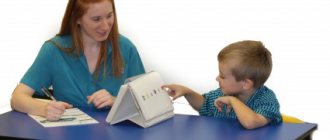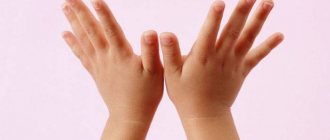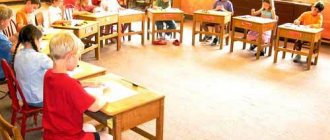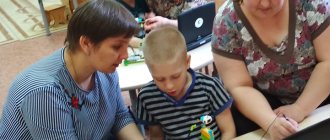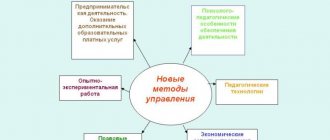Set 8 – Sticks
The set includes a case with nine compartments. Each of them contains sticks. They differ in length and also in color. There are unpainted parts. Objects are used not only to create drawings, but also to teach counting and problem solving.
Guidelines for kit 8
Recommended age: 5 years.
- From several sticks you can create a two-dimensional projection of geometric shapes - a square, a rectangle.
- Counting sticks by color has a positive effect on the development of fine motor skills and logic. To complicate the game, the child is given a random set of sticks, from which it is necessary to count the number of each color and determine which color is missing.
- Thanks to the different lengths of the sticks, it is possible to create entire words.
What does it contain?
- Sticks 9 types.
Set 5 – Cubes and Prisms
The box, which is a cube, contains smaller cubes and triangular prisms. If you add the prisms to each other, you get a cube. The child deepens his knowledge of geometry, trains fine motor skills and thinking. The set can be used as a wooden construction set.
Guidelines for kit 5
Recommended for classes with children from 5 years old.
- This set reveals in more detail how to construct figures in space. By experimenting with the number of shapes and connecting each one to the other, the child creates new versions of geometric shapes.
- Triangular prisms allow you to build objects with an inclined surface.
- By adding a triangular figure to the cubes and bars, you can create a wonderful roof for the house.
What does it contain?
- Cubes.
- Triangular prisms.
Set 2 - Main bodies
The second set will allow the baby to become familiar with basic geometric shapes. He compares them, finds similarities and differences. The toys have metal hooks, so they can be hung on the crossbar using strings. The design is installed on the box and is stable.
Guidelines for set 2
The second set is recommended for classes with children of a more conscious age - from 2-3 years old.
- This set of geometric shapes is suitable for conducting a variety of experiments. For example, if you roll all 3 pieces down an inclined surface, which one will end up at the bottom faster than the others?
- You can hang each figurine by a hook and invite your child to look at it from different angles. This will develop spatial thinking, and the baby will learn to see differences.
- To study the properties of geometric shapes, the game “Turrets” is suitable. Children, together with adults, try to place the figures on top of each other. The children's task is to answer why certain types of objects cannot become a strong foundation for a structure.
What does it contain?
- Ball.
- Cylinder.
- Cube
- Fastenings.
Set 11 - Colored Bodies
The beads are made in the form of different geometric shapes: balls, cylinders, halves of a cylinder, triangular and quadrangular prisms, parallelepipeds. They also differ in color. They can be strung on a string to solve various problems.
The figures are quite large and can be easily held in a child's hand. The child can sort them. This is good counting material.
Guidelines for kit 11
Recommended for children from 2-3 years old
- Children are invited to create funny caterpillars and worms from beads. You can make the task more difficult by giving each child instructions on which beads they should use.
- As an exercise in perseverance, patience and fine motor skills, children completely string each type of bead onto a string. The goal of the game is to find out how many balls, cylinders, triangles and other figures fit on a rope.
- The effective development of the ability to distinguish objects is facilitated by conventional sorting by colors and shapes.
What does it contain?
- Rope.
- Beads.
Set 4 – Cube made of bars
Instead of cubes, the set includes blocks. The child observes how from one figure one can assemble a completely different one - a cube. You can assemble not only towers, but also more complex structures, and compare them with each other.
Guidelines for set 4
Recommended age for children is 3-4 years. A set of bars together with the previous set expands the options for exercises and the field for creativity.
- The set is a continuation of the construction theme. Together with the cubes, the bars allow you to build houses and add roofs to structures.
- Using an example, oblong figures explain how to create a completely new object from one shape - the bars turn into a large cube.
- Thanks to the long shape of the block, it is possible to grow a tower higher than the previous one.
What does it contain?
- A set of identical blocks.
Set 3 - Cube made of cubes
The set includes eight absolutely identical small cubes, from which you can add one large cube. The child learns to count, understand what a part and a whole are, how to make a big one out of small elements. You can build towers from cubes.
Guidelines for set 3
Set 3 is suitable for children from 3 years old.
- Playing with blocks develops building skills in children. To gain first knowledge, it is recommended to start with simple models. The kid can build a table and a chair, create a staircase with steps or a pyramid.
- For the next game you will need to use all the dice from the set. You need to build a high tower and try not to drop a single cube.
- The number of items allows you to create cubes of different sizes. Comparing the size of figures helps to clearly see how and how things in nature differ.
What does it contain?
- 8 identical cubes
Set 10 – Chips
The set includes small round chips. They come in 9 different colors and are stored in separate compartments. They can be mixed and disassembled, clearly illustrated with examples and tasks. Fine motor skills and logical thinking develop.
Guidelines for kit 10
Recommended for children over 5 years old.
- The variety of colors and compact size of the chips allows them to be used in solving mathematical problems. To make the learning process more interesting and enjoyable, each color is given the name of the available objects from the task. For example, if the problem is about an apple, take a red or green chip, any color the children like is suitable for the machine.
- Alternatively, children can create a variety of pictures in the form of dot mosaics.
- The set is completely poured into one container, and the children’s task is to sort the chips by color as quickly as possible.
What does it contain?
- Multi-colored chips.
Set 12 – Mosaic, lacing
The original mosaic from Froebel is distinguished by the presence of colored ropes that can be used to connect different pieces. From them you can collect different images: from simple to complex. The parts are rounded and therefore safe. They fit tightly into the base and do not fall out of it. You can connect only chips of the same color with ropes or create a pattern with them.
Guidelines for kit 12
Recommended age: 2-3 years. The basis of any games with lacing is the sensory development of children.
- The child’s task is to make a picture named by the teacher from multi-colored chips.
- Using strings, you can lace the board through the holes. The game will be a good simulator for children to improve the skill of lacing their own shoes in the future.
- After the child has created a figure from the chips, you can ask him to circle each chip of the same color with a string.
What does it contain?
- Colored ropes.
- Stand with holes.
- Chips of different colors.
Set 7 - Colored figures
A large organizer contains flat shapes: triangles, squares, circles and semicircles. They are made in different colors and are small in size. From these elements you can assemble different designs. They are used as counting material.
Guidelines for kit 7
Recommended age: 5-6 years. A set with colored figures gives free rein to creative tasks. Suitable for both individual and group lessons.
- The kit allows you to transfer a three-dimensional image into two-dimensional space. You can give children the task of creating a certain composition from the proposed figures, starting with a simple one (flower, house, car, etc.) and ending with complex themes.
- To repeat shapes and colors, you can sort the figures, for example, by red color or fold the triangles separately. Over time, the task becomes more complicated and combines several sorting categories at once - yellow circles, white squares, etc.
- As a thinking exercise, children connect the figures and talk about the new shapes they get.
What does it contain?
- Triangles.
- Squares.
- Circles.
- Semicircles.
Set 6 – Cubes, posts and bricks
A more complicated version of the fifth set. It is complemented by cylinders and cylinder halves. This opens up great design possibilities. The child gets acquainted with new figures.
Guidelines for kit 6
Recommended age for classes is 5 years.
- Thanks to the expanded set, children can try their hand at building more complex objects. Together with the sets of previous sets, it will be possible to create improved versions of houses and structures.
- Mini-quizzes are suitable for developing spatial and logical thinking. The child takes two or more objects and tells how each figure is different. During a group lesson, you can divide into teams. The group that names more differences than their opponents wins.
- Building the largest tower allows you to compete and show your skills. To play, you will need items from all previous sets. Children take turns placing the figures on top of each other. If the tower is broken, the game starts again.
What does it contain?
- Cubes.
- Prisms.
- Cylinders.
- Halves of cylinders.
